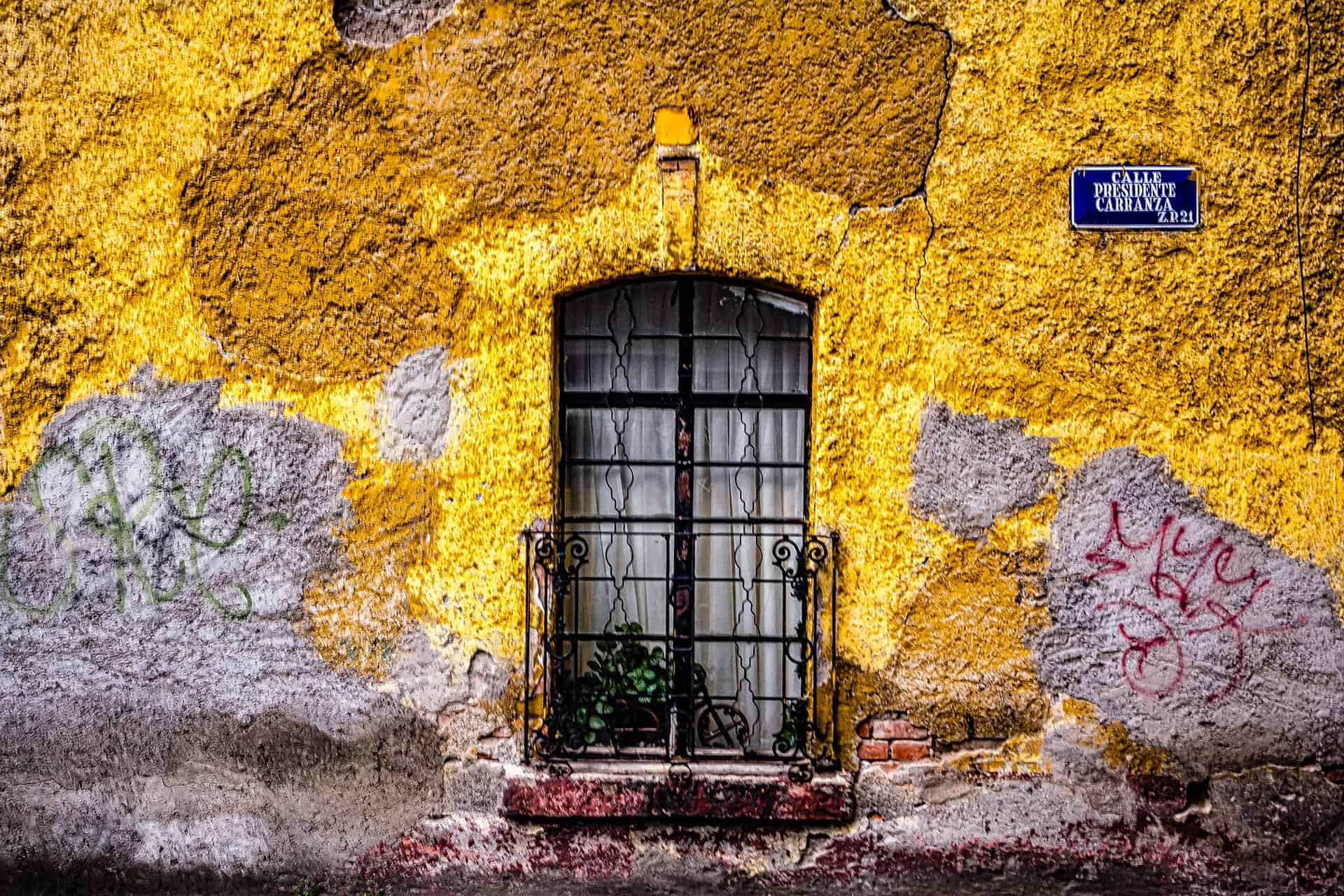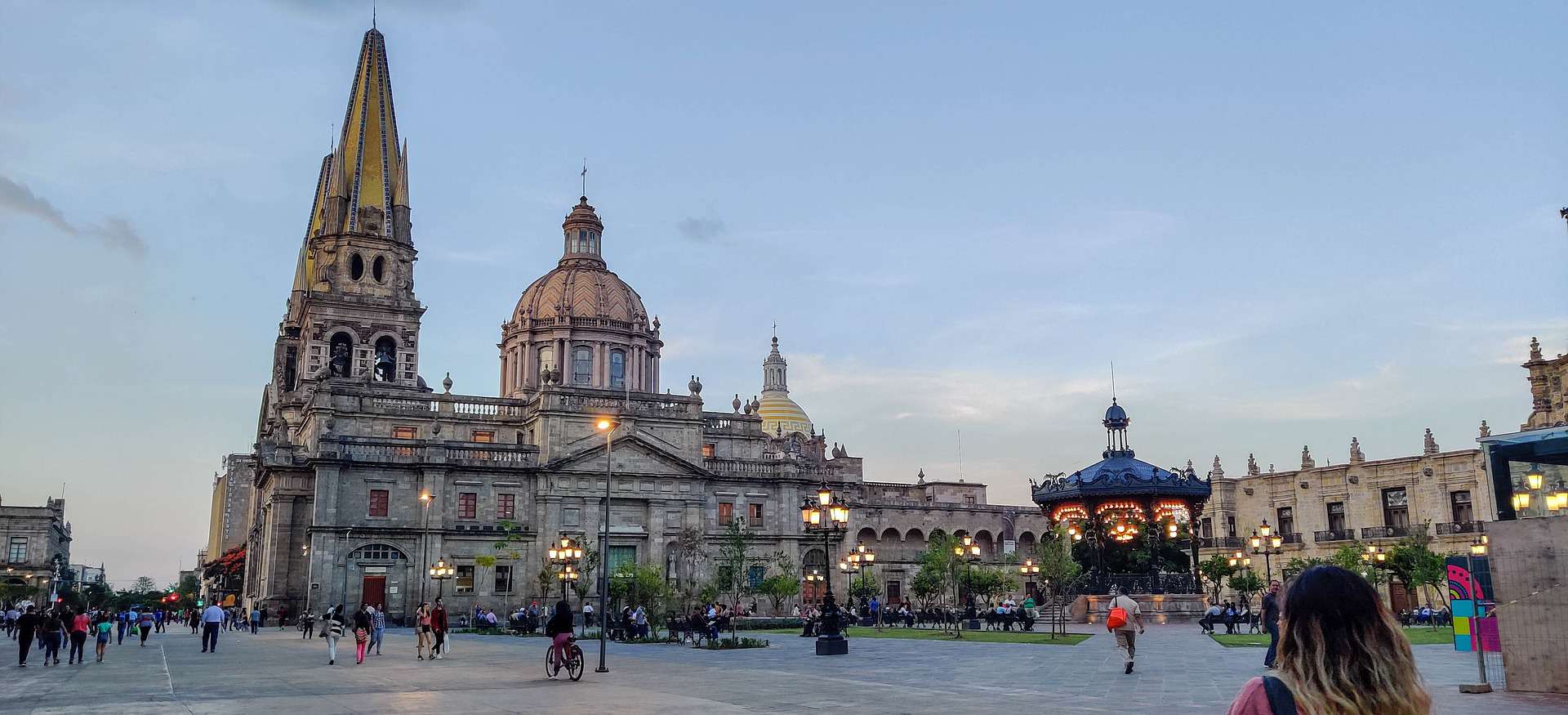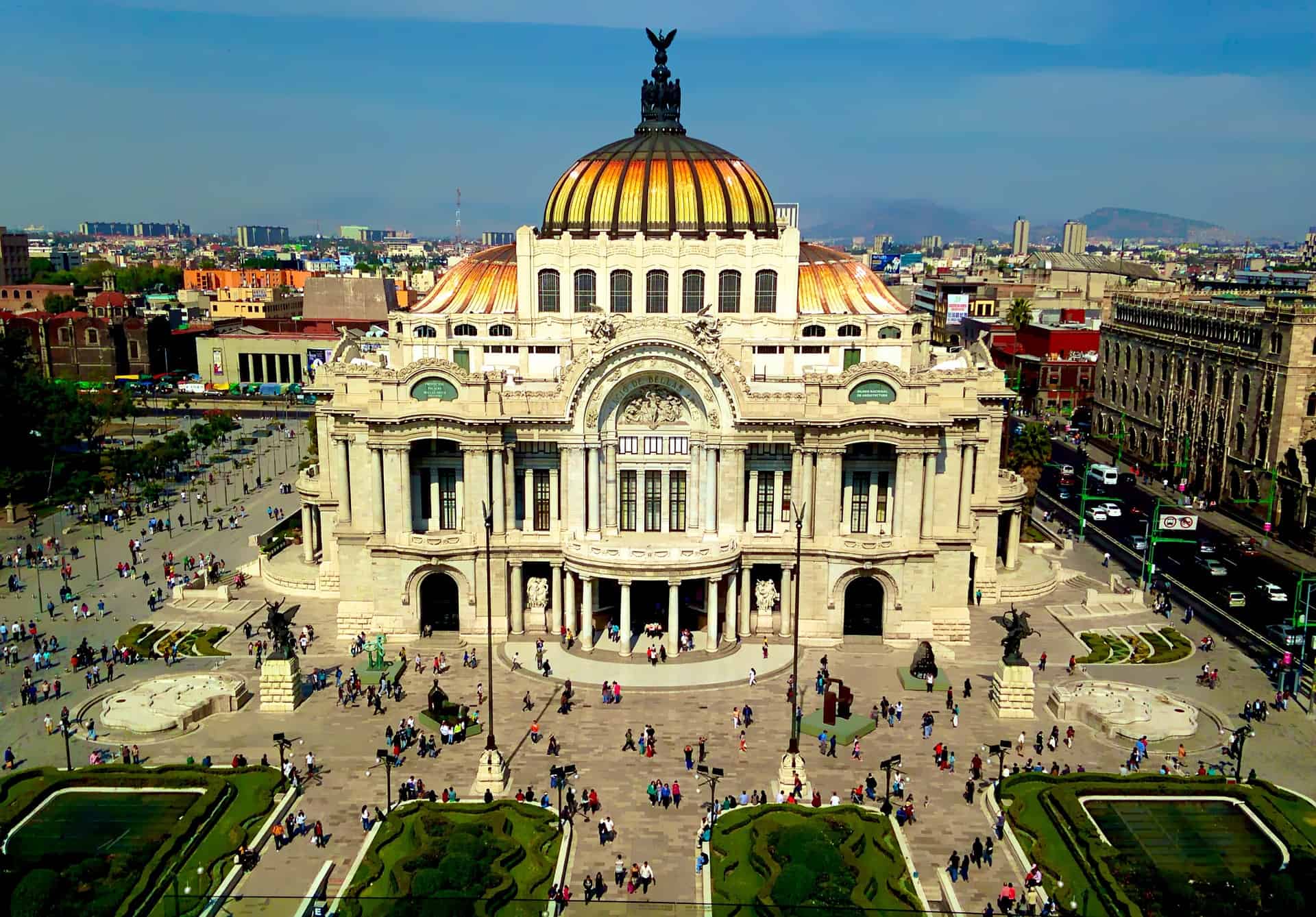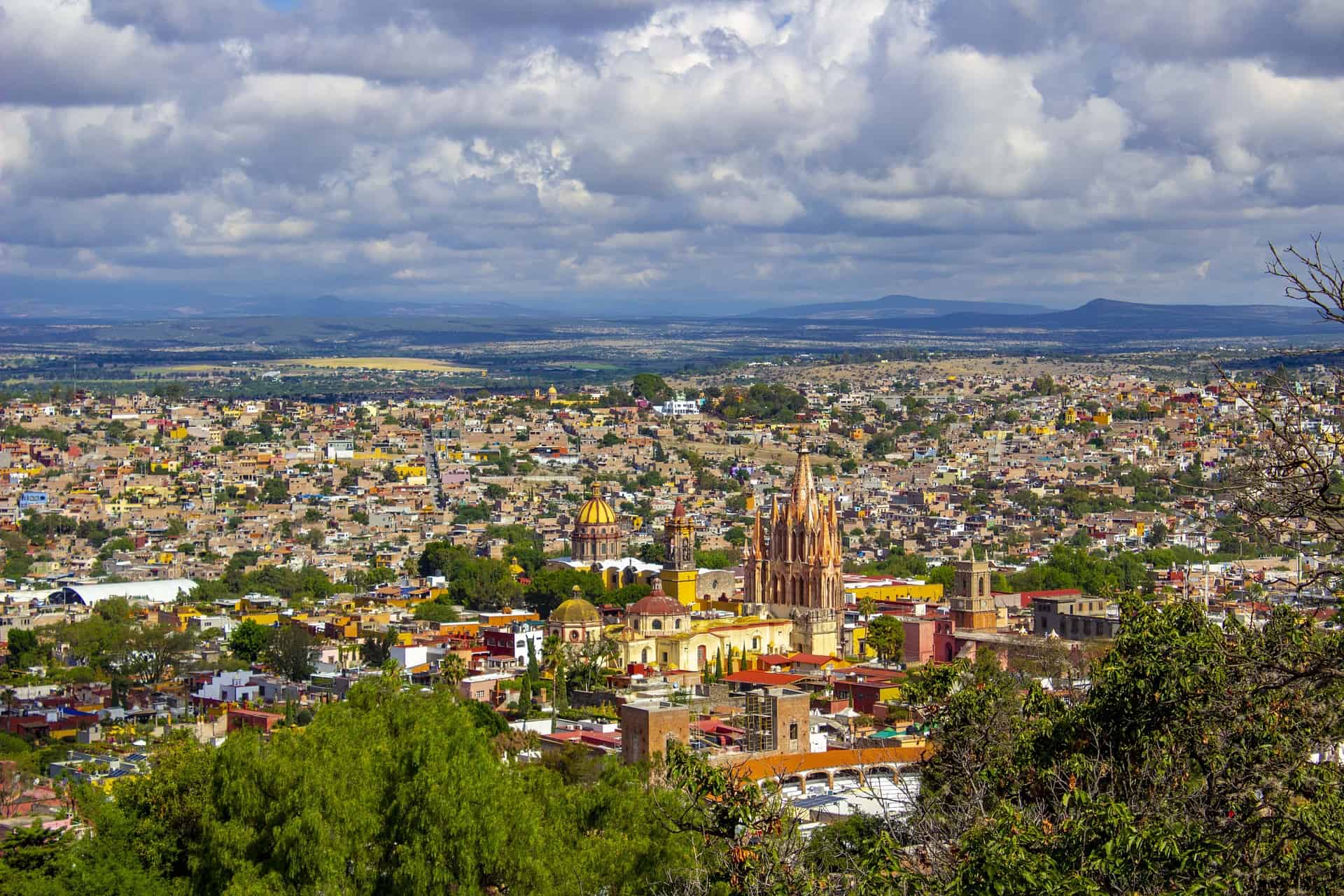
Mexico City City Guide
Planning a trip to Mexico City? Then our gay Mexico City guide is for you.

The capital of Mexico and the second-largest city in the Western Hemisphere is a vibrant and electrifying place. A patchwork of historical and cultural influences, from the Aztec ruins that can still be seen to the Spanish colonial architecture, the city is teeming with opportunity for discovery. Mexico City is the epicentre of finance, industry and fashion in the country and is becoming increasingly more cosmopolitan.
Home to one of the most concentrated and distinct gay districts in South America, Zona Rosa is a hub of gay culture, community and nightlife. The city is home to a multitude of gay bars, clubs and cafes, and whilst they may be more discreet than in some cities, they are no less enjoyable.
Gay rights in Mexico City
Homosexuality was decriminalised in Mexico after the implementation of the French penal code in 1871 and has remained legal ever since. Despite this, many LGBT+ citizens in the country have faced persecution and harassment under Mexico’s immorality and indecency laws.
The country has seen dramatic improvements in the rights and equality of LGBT+ people, with same-sex marriage being legalised in 2015 and joint adoption in 2016. This legislation marked a step in the right direction however same-sex couples must go through a lengthier and more testing application process in order to receive a marriage licence.
Discrimination protections have existed since 2003, with gender identity and sexual orientation explicitly mentioned in the country’s legal code.
Gay nightlife in Mexico City
Despite some lasting conservative attitudes, Mexico City’s gay scene is truly alive and vibrant. Zona Rosa is the main hub of LGBT+ culture in the city and you will find a dynamic, lively and varied mix of gay nightlife experiences on offer. From relaxed lounges and casual cocktail bars to action-packed gay dance clubs, there’s something here to excite any gay traveler.
The epicentre of Zona Rosa’s gay venues is Kinky Bar, the city’s most glamourous and glitzy venue. Kinky is known for its upscale premises and trendy design. Featuring a cosy and intimate smoking and patio area, the bar is known for its charming and hilarious drag queens and large, youthful crowds. Kinky attracts a mixed clientele of guys and girls and is an excellent place to meet gay locals.
Located outside of Zona Rosa and known for its dark, gothic interior, Tom’s Leather Bar is a staple of the Mexico City gay scene and attracts a large and mixed crowd. This leather focused bar features several screens showing adult films and even a spacious darkroom.
Gay Hotels in Mexico City
Zona Rosa is famous for its dense concentration of gay-owned business and strong LGBT+ community. It’s also one of the most popular destinations for gay travelers to stay in Mexico City. The area’s main road- Amberes Street, is a hive of LGBT+ activity and can be compared to Castro Street in San Fransisco or Oxford Street in Sydney. There is a range of hotels located in and around Zona Rosa that offer great accommodation at a range of price points.
Room Mate Valentina is one of the most popular venues on the hotel scene in the city and offers comfortable and trendy stays to its guests. The quirky hotel features eye-catching decor and contemporary furniture to create a truly fresh and modern environment. Located in the heart of Zona Rosa, most of the city’s best gay clubs and bars are located within short walking distance. The Amberes Suites are located on the iconic Amberes Street, the beating heart of Mexico City’s gay community. The hotel has an on-site restaurant that serves delicious and authentic Mexican cuisine and there are a plethora of other restaurants just steps away.
There is also a number of luxury and high-end hotels in Mexico City, many of which offer 5-star accommodation. Some of the best luxury venues include the Four Seasons, St. Regis and Stara Hamburgo.
Gay saunas in Mexico City
Mexico City only has a limited number of gay saunas, but the venues do not disappoint. One of the most popular saunas is Sodome Bath House, a centrally located sauna boasting an extensive range of facilities including a steam room, maze, dark room and foam room. The venue is a great place to meet and cruise local gay guys and Sodome even boasts its own private bar.
Banos Finisterre is a traditional Mexican sauna and bathhouse. The venue is mainly frequented by locals and the prices for massages and other therapies are very reasonable. There is no pressure to cruise here, and visitors are just as welcome to relax as they are to take someone back to a private room.
Getting to Mexico City
The city is served by Mexico City International Airport. The airport is located 11 kilometres from the Downtown area and there are three ways to reach the city centre. Unlike most cities, the fastest and most convenient option is by Taxi. Running 24/7 and familiar with the quickest routes, whilst taxies may be more expensive than the alternatives, they are fast, reliable and convenient.
Alternatively, for the cheapest option, consider using the city’s metro. At only five Pesos for a one-way trip, the metro is affordable and takes around 50 minutes. You will have to change between the airport and the city centre. The metro stations are clearly marked and many signs are in multiple languages making for easy following. However, it is also the longest way to reach the city and the trains can get very crowded at peak times.
Buses can also be caught from the airport. The bus is affordable and relatively quick, taking only 30 minutes to travel from the airport to the city centre.
Getting around Mexico City
Metro
The Metro is the cheapest and fastest option to travel around Mexico City, The train tends to be clean and reliable, however, been cautioned that the first two carriages on every train are women and children only. The metro is particularly crowded at peak times and pickpocketing is common, so travelers are advised to stay vigilant.
Bus
The city bus is fast and efficient however it can get extremely crowded and in summer months it can get very hot. To ride the bus you’ll need to get a Smartcard- passes that grant use to the city’s public transport.
Taxi
Taxi and Uber are the most efficient and fast way to get around the city, particularly in area’s that are less developed and built up. Most hotels are happy to call a taxi for you, and there are signs around the city where you can wait for one to arrive.
Things to do in Mexico City
In lively and action-packed Mexico City there are limitless possibilities when it comes to things to do. However, the most worthwhile attractions include:
- Grab a drink at Fifty Mils
- Stroll the streets of the Old Town
- Visit a speakeasy
- Discover the home of Frida Kahlo
- Immerse yourself in the Palace of Fine Arts
- Shop for antiques at La Lagunilla
- Wander around the artisanal market of La Ciudadela
FAQs
When to Visit
The best time to visit Mexico City is between March and May. Whilst this is the period when the city’s streets will be at their most crowded it is also when the area experiences the best weather. The winter in Mexico City can be cold and the summers rainy, so spring makes for the perfect in-between.
However, visiting between December and February will grant you the best rates on flights and hotels as tourism is generally slower during these months.
Visa
For short visits and vacations, you will not need to apply for a visa to enter Mexico. However, you will need to fill out an immigration form on your flight or upon arrival and these must be kept safe for the duration of your stay. You will need to supply immigration officers with the same form before leaving. Replacement immigration forms can be purchased.
There have been reports of individuals posing as immigration officers inside international airports across the country, so always refuse help from officers and make your way directly to the closest official immigration booth or office.
Money
The official currency of Mexico is the Mexican Nuevo Peso, known simply as the Peso. There are plenty of currency exchange booths and offices around the city and unlike in many locations, the currency exchange offers at the airports tend to be competitively priced.
The greatest concentration of ATMs, banks and exchangers is on Paseo de la Reforma between the Monumento a Cristobal Colon and the Monumento a la Independencia.
Join the Travel Gay Newsletter
Have we got something wrong?
Are we missing a new venue or has a business closed? Or has something changed and we have not yet updated our pages? Please use this form to let us know. We really appreciate your feedback.


